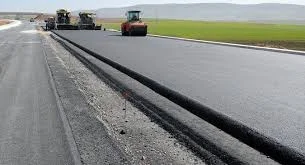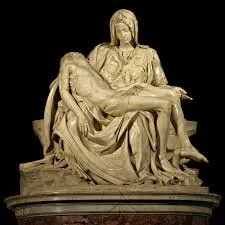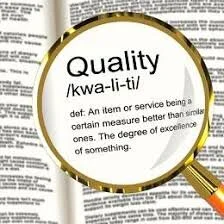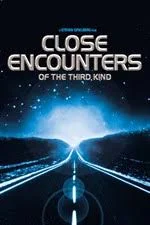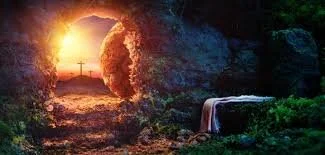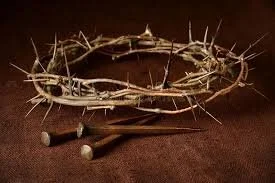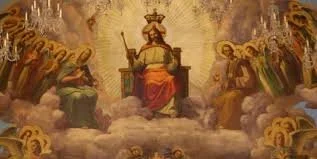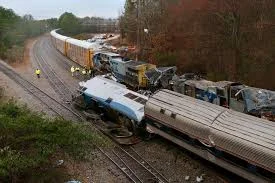The road from he Crucifixion to the Resurrection was built. We contributed to its construction. So did Jesus. Our contribution, however, was different than Jesus’s contribution. The raw materials that we supplied for the construction of the road from the Crucifixion to the Resurrection were torture, suffering, killing and death. Jesus did not contribute revenge, retaliation or retribution. Jesus contributed forgiveness.
Fixing the Roughness of the Road
Construction of the road from the Crucifixion to the Resurrection was a cooperative endeavor between Jesus and the children of Adam and Eve.
Our contribution was torture, suffering, killing and death.
We built a rough road for Jesus - a very rough road for him. Jesus fixed the roughness of the road. His contribution to the construction of the road was forgiveness. To know forgiveness is to know God.
"Every valley shall be filled, and every mountain and hill shall be brought low; and the crooked shall be made straight, and the rough ways shall be made smooth;".
The greatest obstacle blocking us from participating in the new Exodus is our superficial understanding of God
What is the Good News of Great Joy ? Can you give us a synopsis of it? Do you have the words? Is the answer on the tip of your tongue? Do you carry the Good News of Great Joy with you in your pocket always and everywhere? Or is your pocket empty?
Download a high fidelity representation of the reality of God from the proper context. The only context that gives us a a high fidelity representation of the reality of God is the road from the Crucifixion to the Resurrection. There we bear witness to the story of our salvation. The story of our salvation goes like this: We tortured and killed the God who loves us. He forgave us. Wow!
Whose job is it to rebuild the gardens of the new Eden here and now in the Valley of Tears? We think its God’s job. God thinks its our job. There is a difference in opinions. God’s prevails.
What is the detail of consequence? If the detail about God were not important, Jesus would not have released it into the Valley of Tears on the road from the Crucifixion to the Resurrection.
Christianity is a treasure map for treasure hunters engaged in a treasure hunt. A cross marks the spot of the treasure . Grab your shovel. Make your way to the road from the Crucifixion to the Resurrection. There, stake your claim. Dig up the treasure for yourself. Make yourself rich!
The Mass is an echo of the revelation that Jesus released into the Valley of Tears on the road from the Crucifixion to the Resurrection. We took from him that which did not belong to us, his life. He gave to us that which we did not deserve, forgiveness. Upon this unjust transaction between creatures and creator, the entire edifice of Christianity rests. The Mass propagates across time and space this paradigm shifting revelation about the nature of God.
Where did the closest, most informative encounter between us and our God take place? What did we learn from it?
Which is more important? the Mass or the road from the Crucifixion to the Resurrection? Why?
Jesus and the children of Adam and Eve cooperated to build the road from the Crucifixion to the Resurrection. Our contribution was torture, suffering, killing and death. His contribution was forgiveness.
Don’t tell us what you found; show us where to look. Let us make the discovery for ourselves. Let us come to our own conclusion. Where do we go to find the raw materials with which to fill the gap in our understanding of God? There is only one place to go. There is only repository of the treasure of Christianity. Go to the road from the Crucifixion to the Resurrection. Jesus deposited a high fidelity representation of the reality of God on the road from the Crucifixion to the Resurrection. There, forage for an understanding of God.
Don’t tell us what you found. Just show us where to look. Let us enjoy the surprise of discovery. Let us reason from premise to conclusion for ourselves.
The Autobiography of God was written on the road from the Crucifixion to the Resurrection.
Are you too remote from God to hear what he has to say to you? Come closer. Draw near. Put yourself in a position where you can hear God. Jesus released the good news of great joy into the Valley of Tears on the road from the Crucifixion to the Resurrection. The road from the Crucifixion to the Resurrection is the platform from which Jesus gave us a high fidelity representation of the reality of God. On the road from the Crucifixion to the Resurrection, Jesus illuminated the darkness of our understanding of God in a glorious burst of epiphany. The wise anchor their understanding of God to the dramatic demonstration of divinity that took place on the road from the Crucifixion to the Resurrection. However, we cannot hear the revelation unless we go to the road from the Crucifixion to the Resurrection and climb the tree as Zacchaeus did (Luke 19:1-10). What tree must we climb to witness the story of divinity that unfolded on the road from the Crucifixion to the Resurrection? God himself planted the tree for us to climb. The tree that we need to climb to put ourselves in position to hear the good news of great joy is the Cross (1 Corinthians 1:17). Climb the Cross. From the Cross, witness the story of divinity that unfolded on the road from the Crucifixion to the Resurrection. Testify to the truth. Save the world. In the process of saving the world, you save yourself. Don’t delay. Climb the tree. Have you climbed the Cross in the manner of Zacchaeus?
Can you pinpoint the location where Jesus deposited the answer to the question, ‘Who is God?”?

Jesus poured the sweet syrup of forgiveness from the reservoir of love that he held in his most Sacred Heart, through his bloody wounds, and into the Valley of Tears to diute its toxicity in the same way that sugar cubes dilute the bitterness of a cup of bad coffee. Dilution is God's solution to the toxicity of the Valley of Tears.
What is the detail of consequence? If the detail about God were not important, Jesus would not have released it into the Valley of Tears on the road from the Crucifixion to the Resurrection.
Christianity is a treasure map for treasure hunters engaged in a treasure hunt. A cross marks the spot of the treasure . Grab your shovel. Make your way to the road from the Crucifixion to the Resurrection. There, stake your claim. Dig up the treasure for yourself. Make yourself rich!
The Mass is an echo of the revelation that Jesus released into the Valley of Tears on the road from the Crucifixion to the Resurrection. We took from him that which did not belong to us, his life. He gave to us that which we did not deserve, forgiveness. Upon this unjust transaction between creatures and creator, the entire edifice of Christianity rests. The Mass propagates across time and space this paradigm shifting revelation about the nature of God.
Jesus redefined what it means to be King. He turned the definition of King upside down. Once again, he confounded our expectations
Where did the closest, most informative encounter between us and our God take place? What did we learn from it?
What happened when forgiveness met torture, suffering, killing and death in a violent collision on the road from the Crucifixion the Resurrection?
Which is more important? the Mass or the road from the Crucifixion to the Resurrection? Why?
Jesus and the children of Adam and Eve cooperated to build the road from the Crucifixion to the Resurrection. Our contribution was torture, suffering, killing and death. His contribution was forgiveness.
God did not wait for our conversion before he forgave us. He forgave us to bring about our conversion.
The Autobiography of God was written on the road from the Crucifixion to the Resurrection.
The intransigence of God’s love for us despite the brutality of the Crucifixion is the good news of great joy. However, it does not propagate itself. God gave us the Mass to serve as the vehicle that propagates the good news of great joy from then and there across space and time to us here and now. Propagation of the good news of great joy is the purpose of the Mass. God did not invent the Mass to propagate his real presence. The real presence is not the good news of great joy. His real presence is incidental to the good news of great joy - necessary but not sufficient. God established the institution of the Mass to remind us through his bloody wounds that our God is the God who forgave us for the evil that we did to him. Wow! What a God is our God!
Christianity is not monolithic. Different factions of Christianity emphasize different aspects of Christianity. Which aspect of Christianity is, in actuality, its most important aspect? To answer this question, we need to look at what aspect of Christianity Jesus himself put in the position of prominence in the showcase of Christianity. The showcase of Christianity is the road from the Crucifixion to the Resurrection. We made a contribution to the showcase and so did Jesus. We put torture, suffering, killing and death into the showcase. Thankfully, he did not answer the evil that we did to him in kind. He did not give us a taste of our own medicine. His answer to the evil that we did to him was asymmetric - radically asymmetric. Into the position of prominence in the showcase of Christianity, Jesus put forgiveness. Forgiveness is the vehicle that Jesus used to convey to us the nature of God. To know forgiveness is to know God. Do you know your God? The wise anchor their understanding of God to the bombshell of revelation that exploded when Jesus and the evil that we did to him met in violent collision on the road from the Crucifixion to the Resurrection. To what do you anchor your understanding of God?
Jesus entered the Valley of Tears to hold a conversation with us. “Who are you, God? Identify yourself. Friend or foe?” We shouted our question at him. He whispered his answer to us. The conversation took place on the road from the Crucifixion to the Resurrection. The conversation was an interrogation. We gave Jesus the third degree.
Jesus gave a faceless God a face on the road from the Crucifixion to the Resurrection. On the road from the Crucifixion to the Resurrection, Jesus showed us the face of forgiveness. Our God is the God who forgave us for the evil that we did to him. The brutality of the Crucifixion makes the intransigence of his love extraordinary.
"Who are you, Jesus? Identify yourself! Friend or foe?" Jesus answered our question (Luke 23:34) on the road from the Crucifixion to the Resurrection. Our God is the God who forgave us for the evil that we did to him. Wow! The brutality of the Crucifixion makes the intransigence of his love for us extraordinary.
What insight did Jesus give us about God that is the treasure of Christianity? How is the insight distributed across space and time to the children of Adam and Eve?
Whenever you fall into confusion - whenever you become disoriented - whenever you lose your way - whenever your understanding of God becomes cloudy, find your footing on the road from the Crucifixion to the Resurrection. Stability in our understanding of God is found on the road from the Crucifixion to the Resurrection. Regain your balance by returning to the foundation upon which the edifice of Christianity is built. Return to the rock that the builders rejected (Matthew 21:42) .
The doctrine of the Real, but faceless, Presence of God is true - absolutely, entirely and positively. However, it is not true enough. It barely skims the surface of God. It hits the atmosphere of our understanding of God and bounces off. It is a tangent. It contributes little to our understanding of God.
